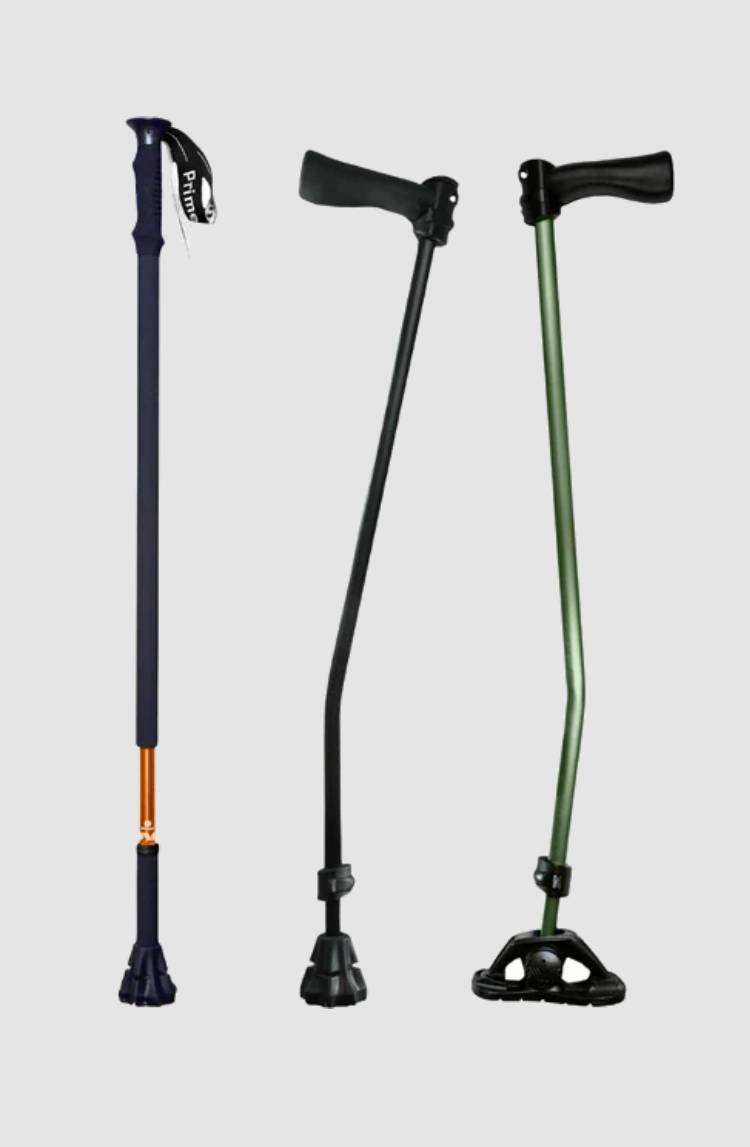
The Journey to Independence: A Guide for First-Time Mobility Aid Users
Share
Sometimes a bad fall, a sports injury or accident can be life changing, affecting how you move on your own for a long period of time. To help get around, your doctor may recommend you purchase a mobility aid. Using crutches, canes, or mobility aids for the first time can be challenging, but with the right guidance and practice, individuals can transition to increased mobility smoothly. Here are our top tips to help make this process easier and more positive:
Accurate Fit and Adjustments:
Ensure that the crutches, canes, or mobility aids are the right height and size for your body. Improper fit can lead to discomfort and potential injuries.
Adjust the height of your cane like the Cyclone Cane or Swing Cane so that your elbows are slightly bent when holding onto them. This will provide better support and control.
Weight Distribution:
Learn to distribute your weight evenly between the mobility aid(s) and your unaffected leg or side.
Avoid putting all your weight on the underarms when using crutches. Instead, use your hands and grip for support, and let your underarms lightly touch the pads.
Inclines and Different Terrains:
When using crutches, approach stairs or inclines slowly and carefully. Always have someone assist you if possible.
For canes or single crutch users, consider using a stair lift or an alternate route with a ramp whenever possible.
Make sure your cane can tolerate wet or uneven surfaces like the PrimeStick, Cyclone Cane or Swing Cane to avoid more falls.
Dressing and Carrying Items:
Wear comfortable and supportive shoes with good traction to reduce the risk of slipping or tripping.
Use a backpack or a bag with a strap to free up your hands while carrying items, but be mindful of the added weight.
Household Safety:
Remove tripping hazards like loose rugs, cables, or clutter from the floor to create a safer living space.
Install grab bars in the bathroom and use non-slip mats in the shower or bathtub to prevent falls.
Always have your assistive device with in reach, just incase you need it.
Taking Care of Yourself:
Rest when needed and don't overexert yourself. Using mobility aids may require more energy than usual.
Perform light exercises and stretches to maintain muscle strength and flexibility.
Gait and Balance:
Talk with your doctor or work with a physical therapist to learn the correct gait and balance techniques with your mobility aid(s).
Take your time and practice walking on flat surfaces before attempting more challenging terrains.
Confidence and Mindset:
Be patient with yourself during the learning process. It's normal to feel a bit unstable at first, but with practice, your confidence will grow.
Reach out for support from family, friends, or support groups to share experiences and gain encouragement.
Travel Tips:
Inform airlines, public transport, or venues about your mobility aid requirements in advance for smoother travel experiences.
Consider renting or purchasing portable, lightweight mobility aids for travel convenience such as the PrimeStick, Cyclone Cane or Swing Cane.
Maintenance and Check-ups:
Regularly inspect and maintain your mobility aid(s) for any wear and tear. Replace worn-out parts promptly.
Schedule regular check-ups with your healthcare provider to assess your progress and make any necessary adjustments to your mobility aid(s).
Remember, the key to a positive transition to using mobility aids is patience, practice, and seeking professional guidance when needed. With time, you'll adapt to the aids and find yourself regaining independence and mobility. Looking for a little more stability? Check out our Dynamo Medical Devices at dynamome.com